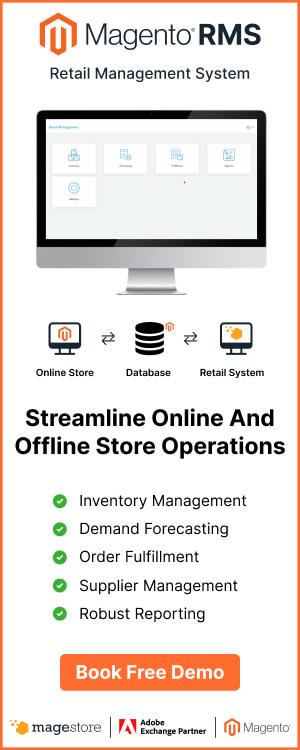Vendor sourcing is a critical aspect of supply chain management and can significantly impact a company’s bottom line. As companies look to maximize efficiency and reduce costs, supplier sourcing becomes increasingly important.
In this article, we’ll provide you with valuable information and best practices for effective sourcing vendors. But first, we’ll walk you through its meaning, types, and why it’s crucial for successful vendor relationship management.
Whether you’re a seasoned procurement professional or just starting out, these tips will help you to effectively implement supplier sourcing and drive success for your organization in 2023.
Sounds good? Let’s dive deep into the world of strategic sourcing!
What is vendor sourcing?

Vendor sourcing involves finding, evaluating, and selecting the best suppliers for your goods and services. However, it’s a complex process requiring careful planning and execution. Inturn, this will help you find the suitable vendors to meet your specific needs, such as price point, quality expectations, reliability, customer service, and delivery schedule.
Let’s take a look at this example of vendors sourcing:
A company needs to purchase office supplies. They conduct sourcing vendors by evaluating multiple suppliers, comparing prices and product quality, and negotiating the best deal. They ultimately select a vendor who can consistently provide high-quality office items at a reasonable cost.
What is the sourcing strategy?
Strategic sourcing or sourcing strategy is a comprehensive procurement method that focuses on the overall value gained from a vendor relationship instead of solely considering the cost of their products or services. As an important aspect of supply chain management, it emphasizes tailored solutions and strong vendor partnerships. This is often seen as a continuous cycle comprising spend analysis, supplier evaluation, and ongoing engagement.
Procurement vs sourcing
Sourcing and procurement are frequently used in the context of retail supply chain management. However, they are not interchangeable. They refer to different aspects of the process.
Understanding the distinction between them is crucial for creating efficient and effective systems for each. Let’s start by defining the terms:
Sourcing is the process of researching and evaluating different suppliers to determine the best fit for the company’s needs in terms of quality, price, delivery, and other factors.
It aims to find the most reliable and cost-effective suppliers who can meet the company’s requirements and expectations.

Procurement, on the other hand, refers to the process of purchasing the goods and services that have been sourced. This involves various activities, such as planning purchases, placing orders, tracking delivery, paying for orders, handling inventory management, negotiating conditions with suppliers, and purchasing the products, among other things.
The goal of procurement is to ensure that the company receives the right products and services at the right time, in the right quantity, and at the right price.
In short, sourcing focuses on finding the best suppliers, while procurement focuses on purchasing the sourced goods and services.
|
Criteria |
Sourcing | Procurement |
| Definition | The process of researching different suppliers to find the best fit for the company’s needs | The process of purchasing goods and services that have been sourced |
| Objective | Find the most reliable, efficient and cost-effective suppliers | Ensure company receives the right product and services |
| Key activities |
|
|
What are the types of sourcing?
Selecting suppliers isn’t just about finding the cheapest goods and services. Instead, you should focus on building good rapport with your suppliers. Depending on what you’re looking for, you could work with wholesalers, manufacturers, or distributors.
These terms can be confusing and overlapping, although we’ll express them in the most understandable way. So, let’s take a look!
Outsourcing
Outsourcing is when an organization transfers some of their supply chain and procurement functions to a third party. This helps many businesses benefit from third parties’ market knowledge and expertise, as well as to reduce costs. Besides, companies typically outsource materials, activities, and labor which is referred to as indirect procurement.
Insourcing
This term refers to a company using their own employees and resources to handle procurement and supply chain functions without hiring an external third party. With insourcing, the company is relying on their own workforce to meet everyday supply chain needs.
Near-sourcing
Near-sourcing or local vendor sourcing is a procurement strategy that involves locating operations close to the target market or where the end products will be sold. This means that everything from sourcing to manufacturing and supply occurs in one place.
With near-sourcing, companies can only operate within a limited supply chain space due to being in one geographical location.
However, this strategy can save organizations a lot of money on transportation costs, and if the company invests in empty lands, they can also save on warehouse costs.
Global vendor sourcing
Global sourcing involves purchasing goods and services from vendors located in different countries or regions. This type of sourcing provides broader access to a range of products and services, as well as the ability to find the best prices and quality.
Moreover, global sourcing can help a business achieve economies of scale, higher production capacity, reduce costs, and mitigate the risks associated with relying on a single supplier or market.
However, global supplier sourcing also presents challenges, such as language and cultural differences, longer delivery times, additional local tariffs and taxes, and higher transportation costs.
Benefits of vendor sourcing

There are numerous advantages that retail businesses can derive from an effective sourcing vendor process. These benefits include, but are not limited to:
Cost savings
The ability to achieve cost savings through strategic sourcing is undoubtedly the biggest benefit of this process. A recent survey conducted by Deloitte revealed that cost reduction is the top priority for 74% of Chief Procurement Officers (CPOs).
By reducing the cost of goods and services, a company can increase their margins and improve their financial performance. This can have a positive ripple effect throughout the organization, leading to increase in new project investment, employee morale, and customer satisfaction.
Reduced risk
Strategic sourcing focuses not only on finding the right vendor but also on avoiding a problematic partnership. Deloitte survey also shows that 75% of CPOs see improved vendor information sharing as their top risk management strategy, and collaboration is a key aspect of strategic sourcing.
Therefore, strategic supplier sourcing is based on the idea of a relationship rather than just a transactional approach with a vendor. This approach leads to a stronger and more trusted partnership characterized by reliability, accountability, and open communication between both parties.
This relationship will help you ensure a consistent supply of high-quality goods and services and minimize the risk of losing customers because of inventory shortage during high season such as holidays.
Enhanced sustainability
By considering sustainability factors such as environmental impact and labor practices, a business can ensure that suppliers align with their values and contribute to a more sustainable supply chain.
Improved consistency
When a vendor and a buyer work together in a mutually beneficial partnership, they can quickly fix any issues with defective products or the supply chain. This helps maintain the supply chain integrity and prevents any operational delays.
Stronger vendor relations
An effective supplier sourcing process helps build strong and mutually beneficial relationships with suppliers. By working closely with vendors, a business can ensure that their suppliers understand their needs and can provide the best products and services.
7 steps of the vendor sourcing process

The supplier sourcing process typically involves several important steps, including:
Step 1 — Assess needs and requirements
Before searching for vendors, brands should evaluate the needs of each department by conducting an examination of current resources.
This includes determining the current costs as well as any additional expenses that will be incurred in obtaining the necessary items.
Step 2 — Access the market
A thorough market assessment is essential to ensure that you’re making informed decisions about your strategic sourcing. This involves researching and analyzing the market trends, competitive intelligence, key vendors, and industry best practices.
Step 3 — Build sourcing guidelines
To get the best from your supplier pool while minimizing risk and cost, it’s important to determine your method and location for procurement.
Start by defining your business objectives and setting minimum requirements for suppliers. Then, you can create a set of selection criteria based on which suppliers meet your needs, capabilities, and resources. This will help you choose the right vendors for your business.
Step 4 — Select the sourcing process
The next step is selecting the appropriate method for soliciting bids. One common approach that many businesses use is issuing a request for proposal (RFP).
The RFP is a document drafted by the procurement team that seeks proposals through a bidding process. It outlines the specifications, requirements, pricing, legal and financial terms, and evaluation criteria for the desired product or service.
Step 5 — Negotiate
After receiving responses from multiple suppliers to your RFP, it’s time to narrow down the list of potential suppliers. You should review the information or conduct clarification interviews if needed.
Having comprehensive information on each supplier will facilitate the decision-making process. Additionally, storing all information in one place reduces the need for lengthy email exchanges and conference calls.
Step 6 — Incorporate vendors into the implementation process
Once the negotiation phase is complete, it’s time to finalize the supplier selection and inform the chosen partners.
The next move you need to make after selecting the ideal supplier is to ensure the smooth delivery of goods and services through annual and inventory forecasting.
Step 7 — Monitor supplier performance through benchmarking
Vetting vendors’ performance regularly is crucial to assess their progress. This starts with establishing a baseline for the product’s current status, continuously tracking its performance, and confirming that the desired outcome is being achieved.
By taking these measures, you can quickly identify any issues during implementation and notify your suppliers accordingly to help mitigate the problem’s impact on business.
4 Best practices for vendor sourcing

Keep communication open
Every member of your strategic sourcing team has something valuable to contribute. To make the best decisions, it’s essential to stay connected and collaborate. And when you face new challenges, work together to find the best solutions.
Look beyond the price tag
The goal of strategic sourcing isn’t just to reduce costs but also to improve operational efficiency, identify underperforming suppliers, standardize processes, and build profitable partnerships. By focusing on productivity, profits, and progress, you can achieve long-term success.
Evaluate your suppliers regularly
To ensure that you’re working with the best vendors, gather your sourcing team regularly and seek feedback. Ask questions about what’s working and where improvements can be made. By evaluating suppliers and the sourcing process, you can continuously improve.
Use the right vendor requests
There are three types of vendor requests: request for information, request for proposal, and request for quotation. Understanding when to use each type is critical for engaging potential vendors effectively.
Request for information (RFI)
An RFI requests vendors to provide suggestions and creative solutions to a problem. While it can be a precursor to an RFP or RFQ, its main purpose is to inform the potential buyer of the vendors, services, or goods that are available.
Request for proposal (RFP)
An RFP is a formal process used when a purchase or strategic partnership is imminent. It helps you compare vendors and find the best fit for your needs.
Request for quotation (RFQ)
An RFQ is a simple request for pricing and payment terms. It’s best to use when you already know what solution you’re looking for and want to evaluate vendors based on price.
The bottom line
The 7 tips provided in this article should serve as a useful starting point for companies looking to implement a successful vendor sourcing strategy in 2023. These tips include conducting thorough research, establishing clear goals and criteria, building meaningful partnerships, and regularly monitoring and evaluating supplier performance.
With the right approach, companies can create a sourcing strategy that delivers long-term value to their business and supports the growth and success of their organization.
As vendor management is only one task of a retail business, to automate and streamline your whole retail operations, a store management system will help.
We hope you found the article informative and engaging. Lastly, if you have any other questions or concerns about this topic or how to manage your vendors fruitfully, you can contact us anytime.














